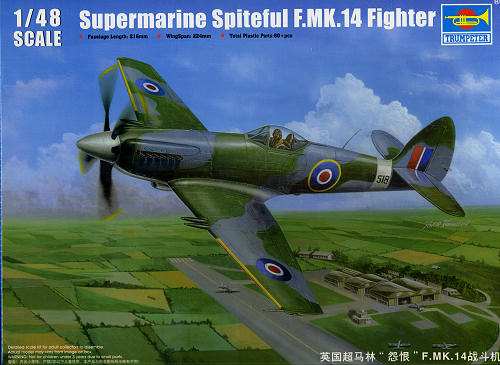
| KIT #: | 02850 |
| PRICE: | $31.99 SRP |
| DECALS: | Three options |
| REVIEWER: | Scott Van Aken |
| NOTES: | New tool kit |

| HISTORY |
By 1942, Supermarine designers had realised that the aerodynamics of the Spitfire's wing at high Mach numbers might become a limiting factor in increasing the aircraft's high-speed performance. The main problem was the aeroelasticity of the Spitfire's wing; at high speeds the relatively light structure behind the strong leading edge torsion box would flex, changing the airflow and limiting the maximum safe diving speed to 480 mph (772 km/h) IAS. If the Spitfire was to be able to fly higher and faster a radically new wing would be needed.
Joseph Smith and the design team were aware of a paper on compressibility, published by A D Young of the R.A.E, in which he described a new type of wing section; the maximum thickness and camber would be much nearer to the mid-chord than conventional airfoils and the nose section of this airfoil would be close to an ellipse
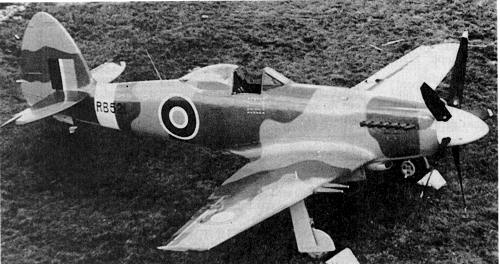 Specification 470 described how the wing had been designed with a simple straight-tapered planform to simplify production and to achieve a smooth and accurate contour. The wing skins were to be relatively thick, aiding torsional rigidity which was needed for good aileron control at high speeds. Although the prototype was to have a dihedral of 3° it was intended that this would be increased in subsequent aircraft.Another change, to improve the ground-handling, was replacing the Spitfire's narrow-track, outward-retracting undercarriage with a wider-track, inward-retracting system. The Air Ministry were impressed by the proposal and, in February 1943, issued Specification F.1/43 for a single seat fighter with a laminar flow wing; there was also to be provision made for a wing folding scheme to meet possible requirements. The new fighter was to use a fuselage based on a Spitfire VIII.
Specification 470 described how the wing had been designed with a simple straight-tapered planform to simplify production and to achieve a smooth and accurate contour. The wing skins were to be relatively thick, aiding torsional rigidity which was needed for good aileron control at high speeds. Although the prototype was to have a dihedral of 3° it was intended that this would be increased in subsequent aircraft.Another change, to improve the ground-handling, was replacing the Spitfire's narrow-track, outward-retracting undercarriage with a wider-track, inward-retracting system. The Air Ministry were impressed by the proposal and, in February 1943, issued Specification F.1/43 for a single seat fighter with a laminar flow wing; there was also to be provision made for a wing folding scheme to meet possible requirements. The new fighter was to use a fuselage based on a Spitfire VIII.
The new wing was fitted to a modified Spitfire XIVNN660, in order to make a direct comparison with the earlier elliptical wing, and was first flown on 30 June 1944 by Jeffrey Quill. Although the new Spitfire's speed performance was comfortably in excess of an unmodified Spitfire XIV, the new wing displayed some undesirable behaviour at the stall which, although acceptable, did not come up to the high standards of Mitchell's earlier elliptical wing. NN660 crashed 13 September 1944, killing pilot Frank Furlong. No reason for the loss was officially established.
In the meantime, the opportunity had been taken to redesign the Spitfire's fuselage, to improve the pilot's view over the nose and to eliminate a slight directional instability by using a larger fin and rudder. This instability had been apparent since the introduction of the more powerful Griffon engine. The instability was exacerbated by the increase in propeller blade area due to the introduction of the four-bladed and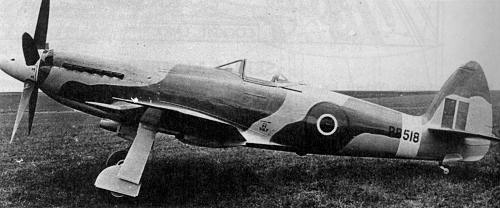 subsequent five-bladed Rotol airscrews for the next aircraft, NN664 (for which Specification F.1/43 had been issued). The updated design incorporated the new fuselage (although lacking the enlarged fin/rudder) and, as it was now substantially different from a Spitfire, the aircraft was named "Spiteful" (although "Victor" had been originally proposed).
subsequent five-bladed Rotol airscrews for the next aircraft, NN664 (for which Specification F.1/43 had been issued). The updated design incorporated the new fuselage (although lacking the enlarged fin/rudder) and, as it was now substantially different from a Spitfire, the aircraft was named "Spiteful" (although "Victor" had been originally proposed).
The Spiteful was ordered into production as the Spiteful XIV (having no preceding marks of its own, the numerals were carried over from the original Spitfire XIV conversion), and 150 of the aircraft were ordered. With the advent of jet propulsion, however, the future of high-performance fighters was clearly with the jet fighter, and so the order was later cancelled with only a handful of Spitefuls built.
The enlarged fin/rudder of the Spiteful was also used on the Spitfire Mark 22 and 24s and Seafire Mark 46 and 47s and was usually referred to as the "Spiteful type" tail.
| THE KIT |
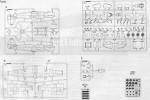 The kit is very nicely molded and has the usual fine engraved panel lines and rivet detail that we have come to expect from modern injected plastic k
The kit is very nicely molded and has the usual fine engraved panel lines and rivet detail that we have come to expect from modern injected plastic k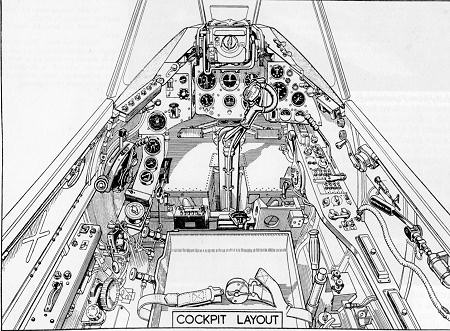 its. In fact, the rivets are nicely understated and one has to inspect things closely to see them. As this is a pretty basic aircraft and was never fitted with drop tanks or weapons, it should prove to be a pretty fast build.
its. In fact, the rivets are nicely understated and one has to inspect things closely to see them. As this is a pretty basic aircraft and was never fitted with drop tanks or weapons, it should prove to be a pretty fast build.
The cockpit is rather un-Spitfire like in that there is a different instrument panel and there are real side consoles such as you'd see in an F-15, for example that run the full length of the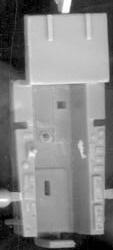 cockpit. This is not totally prototypical as the real Spiteful cockpit was rather busy and cluttered, as you can see from the drawing. But it is not bad for a mass produced kit and to my eye, is not the disaster that has been mentioned elsewhere. Until a much more detailed resin cockpit comes (and you can bet that one will be done), it is adequate enough for most. Besides, the clear canopy is a bit on the thick side and unless posed open, the detail within will be moot. I should mention that the canopy section is a true bubble and has a seam down the center of it that will need to be sanded smooth.
cockpit. This is not totally prototypical as the real Spiteful cockpit was rather busy and cluttered, as you can see from the drawing. But it is not bad for a mass produced kit and to my eye, is not the disaster that has been mentioned elsewhere. Until a much more detailed resin cockpit comes (and you can bet that one will be done), it is adequate enough for most. Besides, the clear canopy is a bit on the thick side and unless posed open, the detail within will be moot. I should mention that the canopy section is a true bubble and has a seam down the center of it that will need to be sanded smooth.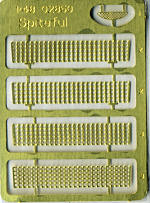
The kit provides a photo etch fret for the lower carb intake and both of the wing mounted radiators. Later Spitefuls had a longer carb intake section that reached to just behind the propeller, but all Spitefuls seem to have been built with the shorter carb first and then modified.
There are few options with the kit. One is to have a camera installed in the fuselage for which not only is the camera and rack provided, but the modeler will need to open the hole for the camera window. This seems to have been a pretty standard arrangement late in the war as many Spitfire XIVs had this as did later Spitfires and Seafires. The other is to have the flaps down. The kit has separate ailerons, but those are to be molded in the neutral position. I should also mention that the radiator outlet flaps are molded down. The kit comes with three spoke wheels with circumferal tread tires. As you can see from the above photo of RB 521, at least one aircraft had four spoke wheels. Other photos of Spitefuls show the three spoke variety.
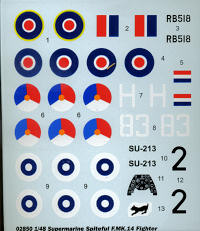 Instructions are well done as is the norm with Trumpeter. There is no color information provided during the construction sequences, so one has no clue as to what color to paint the cockpit. I find this to be irritating in the lea
Instructions are well done as is the norm with Trumpeter. There is no color information provided during the construction sequences, so one has no clue as to what color to paint the cockpit. I find this to be irritating in the lea st, but will have to assume that British Interior Green is the proper shade to use. The full color painting guide does offer a variety of manufacturers from which to choose your colors. It shows the wheel wells as being aluminum. There are options for three aircraft. One is for RB 518 as in one of the photos above. This is in standard RAF European colors with the yellow wing leading edges. As you can see from the images, these planes were apparently polished as the colors are certainly not matte. The other two markings are for the what if crowd with one being for a Dutch aircraft in RAF camo and the other for a Finnish plane in silver (or unpainted aluminum). The decals are well printed and glossy. However, the red for the RAF roundels is too bright and I fear that the yellow surround will be a bit on the transparent side. Fortunately, getting replacements is not really that much of an issue. You will also notice that a decal is provided for the instrument panel if the builder so desires.
st, but will have to assume that British Interior Green is the proper shade to use. The full color painting guide does offer a variety of manufacturers from which to choose your colors. It shows the wheel wells as being aluminum. There are options for three aircraft. One is for RB 518 as in one of the photos above. This is in standard RAF European colors with the yellow wing leading edges. As you can see from the images, these planes were apparently polished as the colors are certainly not matte. The other two markings are for the what if crowd with one being for a Dutch aircraft in RAF camo and the other for a Finnish plane in silver (or unpainted aluminum). The decals are well printed and glossy. However, the red for the RAF roundels is too bright and I fear that the yellow surround will be a bit on the transparent side. Fortunately, getting replacements is not really that much of an issue. You will also notice that a decal is provided for the instrument panel if the builder so desires.
| CONCLUSIONS |
From what I have seen, it builds into a nice representation of the last of the RAF Spitfire line. Spitfire boffins will want to grab this and perhaps hang on a bit for a better cockpit.
| REFERENCES |
http://en.wikipedia.org/wiki/Supermarine_Spiteful
Spitfire: The History, by Morgan and Shacklady, 1987, Key Publishing
Thanks to Squadron Products for the preview kit.
April 2012
If you would like your product reviewed fairly and fairly quickly, please contact the editor or see other details in the